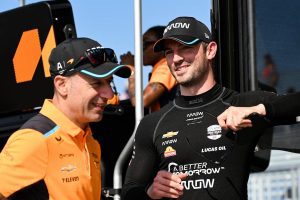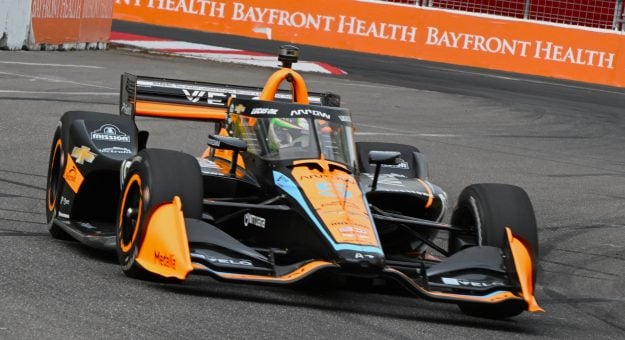With its recent success in the NTT IndyCar Series, Arrow McLaren has become one of the series’ power teams. Now that McLaren has majority control of the operation, it has created a synergy between its Formula 1 operation in Woking, England, and the IndyCar program in Indianapolis.
But the team’s influence on the IndyCar paddock goes much deeper. It has forced other teams to a higher level – competitively, commercially and financially.
“It’s good for the sport,” rival team owner Dale Coyne told SPEED SPORT. “It elevates everyone else’s game. They have brought money to the paddock.

“When I talk about a big team versus a small team; you can go to McLaren and make more money as a mechanic or an engineer, but you are also in a much bigger structure. Maybe that is not what you want to do. Is it about having fun or making money?
“We’ve got a group of racers and they all have racing in their soul. If they want to go after money, they have an option to do that. If they want to race, they have another option.”
This year, Arrow McLaren features a three-driver lineup that features championship contenders Pato O’Ward of Mexico, Felix Rosenqvist of Sweden and California’s Alexander Rossi.
Tony Kanaan, the 2013 Indianapolis 500 winner and 2004 IndyCar Series champion, joins the team for the final IndyCar race of his career in the 107th Indianapolis 500 on May 29.
With McLaren the primary owner of Arrow McLaren, the team is poised to challenge Team Penske and Chip Ganassi Racing for IndyCar Series supremacy.
When McLaren returned to the Indianapolis 500 with two-time Formula 1 champion Fernando Alonso in 2017, it was the first time the brand had participated in Indy car racing since 1979.
The late Bruce McLaren came to the Indianapolis 500 for the first time in 1970 with a three-driver effort that included Chris Amon, Denny Hulme and himself. Amon withdrew and Hulme was severely burned on his hands from a crash in practice. They were replaced by Peter Revson and Carl Williams and a glorious history at the Indianapolis Motor Speedway began.
In 1971, the team created the McLaren M16, a car that Penske Racing driver Mark Donohue claimed, “obsoleted every other car on the track.” Revson won the pole and finished second to Al Unser.
The following year, Penske Racing gave Donohue a McLaren M16B and he drove it to team owner Roger Penske’s first Indianapolis 500 victory.
In 1973, Johnny Rutherford joined the McLaren team. He won the Indianapolis 500 in 1974 and ’76 for McLaren. He won a third Indianapolis 500 for Jim Hall in 1980, one year after McLaren left the series to focus on Formula 1.
That is why McLaren’s return to the 2017 Indianapolis 500 was so important. It created a partnership with Andretti Autosport and Alonso quickly adapted to the Indianapolis Motor Speedway. He led 27 laps in the race and was running seventh when his Honda engine failed with 21 laps remaining.
McLaren’s return to Indy was led by its ambitious CEO Zak Brown, a Los Angeles native who became one of the top sports marketers in racing before moving to Formula 1.
It was obvious Brown and McLaren had bigger plans than a one-off Indy effort. They were sizing up the NTT IndyCar Series for possible expansion.
Although McLaren did not participate at Indy in 2018, Brown was a frequent visitor to the IndyCar paddock. His original plan was to be part of Andretti Autosport, but Honda officials blocked that effort after a major fallout over its Formula 1 program.
